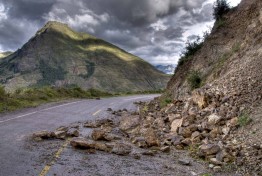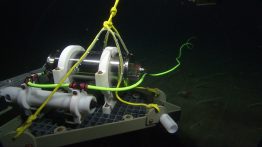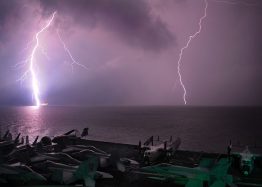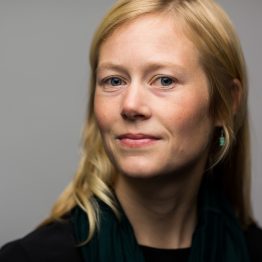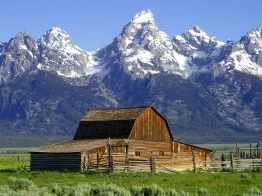We know the "really big one" is coming. But what exactly is going to happen in cities along the coast?
Read more at UW Today »Hacking a pressure sensor to track gradual motion along marine faults
Deep below the ocean’s surface, shielded from satellite signals, the gradual movement of the seafloor — including along faults that can unleash deadly earthquakes and tsunamis — goes largely undetected. As a result, we know distressingly little about motion along the fault that lies just off the Pacific Northwest coast. University of Washington oceanographers are working with a local company to develop a simple new technique that could track seafloor movement in earthquake-prone coastal areas.
Read more at UW Today »Ship exhaust makes oceanic thunderstorms more intense
New research from UW atmospheric scientist Joel Thornton and others finds that storms above the world’s busiest shipping lanes are significantly more powerful than storms in areas of the ocean where ships don’t travel.
Read more at UW Today »Land-sea experiment will track earthquakes, volcanoes along Alaska Peninsula
The National Science Foundation is funding the largest marine seismic-monitoring effort yet along the Alaska Peninsula, a region with frequent and diverse earthquake and volcanic activity. Involving aircraft and ships, the new Alaska Amphibious Community Seismic Experiment will be led by Cornell University in Ithaca, New York, with partners at the University of Washington and seven other research institutions. “This effort will really change the information we have at our disposal for understanding the seismic properties of subduction zones,” said Emily Roland, a UW assistant professor of oceanography and one of nine principal investigators on the project.
Read more at UW Today »Q&A: How Idaho, Montana, North Dakota and Yellowstone National Park are confronting climate change
The Northern Rocky Mountain ecosystem includes huge swaths of federal lands, two national parks and some of the most spectacular wild spaces in the country. University of Washington researchers are helping managers of those lands prepare for a shifting climate. “Climate Change and Rocky Mountain Ecosystems,” a book published in August, was edited by Jessica Halofsky, a UW research ecologist in the School of Environmental and Forest Sciences, and David Peterson, a senior research biologist with the U.S.
Read the UW Today Q&A »
